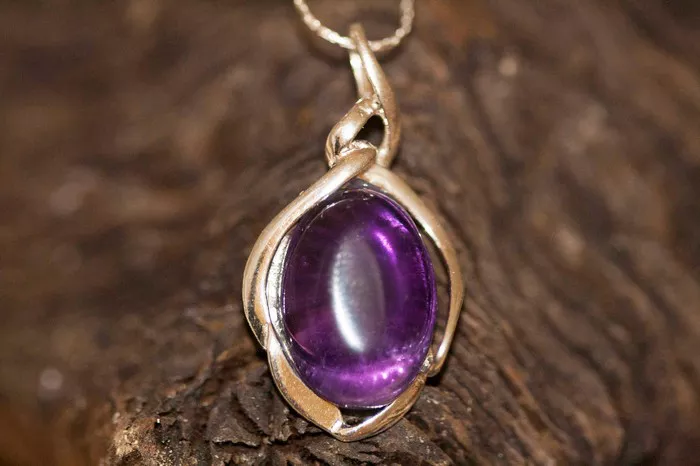Gemstones captivate us with their enchanting allure, transcending the boundaries of “precious” and “semi-precious” classifications. Within this realm, we’ve uncovered ten of the most fascinating and breathtaking gemstones—each a unique masterpiece in its own right.
While the Gemological Institute of America (GIA) expertly analyzes and grades a plethora of commercially available gemstones, it also serves as an invaluable educational resource. For those seeking to delve deeper into the world of gemstones, consider exploring GIA’s educational offerings, often available to the public at select locations.
1. Agate: Nature’s Artistry Unveiled
Agate, a variety of chalcedony, showcases mesmerizing moss-like inclusions, translucent regions, and captivating color patterns. Its vivid hues, a result of trace amounts of iron oxides, manganese, titanium, and other elements, make it a favorite among jewelers for a wide range of applications. Agate’s intrinsic beauty and versatility render it a cherished addition to the world of jewelry.
2. Alexandrite: The Color-Shifting Wonder
Alexandrite, a variety of chrysoberyl, is celebrated for its extraordinary color-changing abilities. It gleams emerald green in sunlight and transforms into a purplish-red hue under incandescent light. The cost of alexandrite is intricately linked to the extent of its color shift and size, with opaque cabochons that undergo dramatic shifts commanding a premium. Despite its rarity and the depletion of its original source in Russia’s Ural Mountains, alexandrite holds a coveted spot as an alternative birthstone for June and is believed to foster balance and enhance creative abilities.
3. Amazonite: An Ancient Beauty
Amazonite, a green-to-greenish-blue feldspar, boasts a rich history dating back thousands of years, as evidenced by archaeological finds in Egypt and Mesopotamia. While its beauty is undeniable, its Mohs hardness rating of 6.0-6.5 positions it as a gemstone of slightly lower durability. Found in various corners of the globe, amazonite’s color, previously attributed to copper, is a result of lead and water within the feldspar. Metaphysically, it is thought to offer balance and a soothing influence on emotions.
4. Amber: Fossilized Time Capsules
Amber, renowned for its association with the Amber Room in the Catherine Palace and the silver screen allure of Jurassic Park, is fossilized tree resin. High-quality amber, sought after by artisans, hails from locales like the Baltic Sea and Myanmar. It has also been unearthed in regions as diverse as Lebanon, Israel, and South America. Amber, with its range of colors from pale yellow to nearly black, serves as a window into the past, housing over 1,000 specimens of long-extinct creatures and plant matter.
5. Amethyst: The Regal Purple Quartz
Amethyst, a quintessential gem, is celebrated for its stunning purple hue, boasting a Mohs hardness of 7.0. It is not only a cherished birthstone for February but also a traditional choice for the 6th and 17th wedding anniversaries. With ties to the Greek god of wine, Dionysus, amethyst was believed to ward off drunkenness. Simultaneously, it was thought to sharpen the mind in battle and business. The element manganese imparts amethyst’s distinctive purple shade, making it a beloved gem for meditation and enhancing chakra development.
6. Ammolite: Ancient Opalescent Relics
Ammolite, often confused with ammonite, is technically distinct, denoting only gem-quality fossil shells. These iridescent fossils, displaying a vibrant array of colors, find new life in exquisite jewelry pieces. While once marine mollusks that went extinct around 65 million years ago, gem-quality ammolites are exclusively discovered in Alberta, Canada’s Bearpaw Formation.
7. Azurite: Nature’s Deep Blue Canvas
Azurite, a captivating deep-blue mineral, arises from the weathering and oxidation of copper ore deposits. With a Mohs hardness rating of 3.5 to 4, azurite is a delicate gem often found alongside malachite, albeit in smaller quantities. Historically used as a blue pigment in art, azurite, due to its transitional nature, can develop a greenish hue over time. Revered by many cultures for its connection to the spiritual realm, azurite is believed to resonate with the third-eye chakra, guiding seekers toward enlightenment.
8. Aquamarine: The Gem of Tranquil Seas
Aquamarine, with its clear blue to slightly greenish-blue allure, is a cherished favorite. A beryl variety boasting a Mohs hardness of 7.5 to 8.0, aquamarine’s captivating hue is attributed to impurities like iron. Found worldwide, with the most coveted specimens hailing from Brazil, it holds a rich history. Sailors once carried aquamarine as a talisman, believing it calmed the seas and ensured safe voyages. Additionally, it is associated with marital happiness, serving as the traditional 19th wedding anniversary gift and embodying values of faithfulness, friendship, and courage.
9. Chrysoberyl: A Gem of Unmatched Resilience
Chrysoberyl, one of the hardest gemstones with a rating of 8.5 on the Mohs scale, encompasses a spectrum of colors from yellow-brown to greenish-gray. Its exceptional feature is color-changing ability, as seen in the mesmerizing Alexandrite. Chrysoberyl deposits can be found on various continents, with Brazil offering some of the finest specimens. Revered for its compassionate energy, chrysoberyl is believed to ground individuals during times of stress, enhance analytical skills, and aid in strategic thinking, fostering personal growth.
10. Bloodstone: Nature’s Work of Art
Bloodstone, a chalcedony variety, boasts a rich history and a distinct appearance. Its deep green hue is adorned with sporadic red specks resembling drops of blood, making it a unique gemstone with a Mohs hardness rating of 6.5 to 7.0. Bloodstone has been cherished for centuries, not only for its aesthetic appeal but for its healing properties. Believed to detoxify organs, bloodstone’s association with blood dates back 5,000 years to ancient Mesopotamia.
These ten gemstones exemplify the extraordinary diversity and enduring allure of nature’s precious creations, each possessing a unique character and story that continues to captivate gem enthusiasts around the world.


